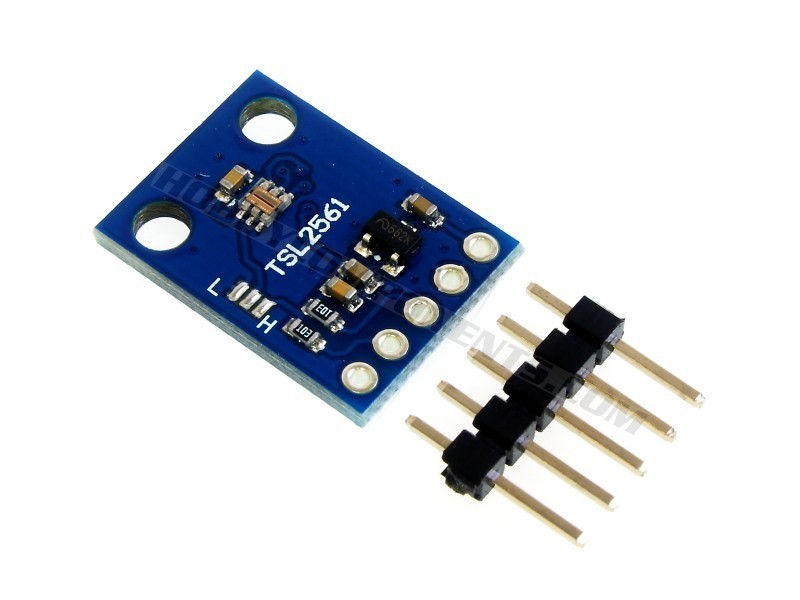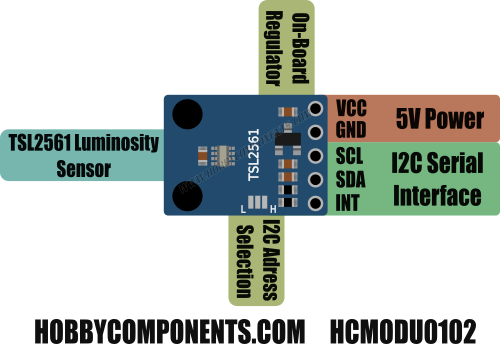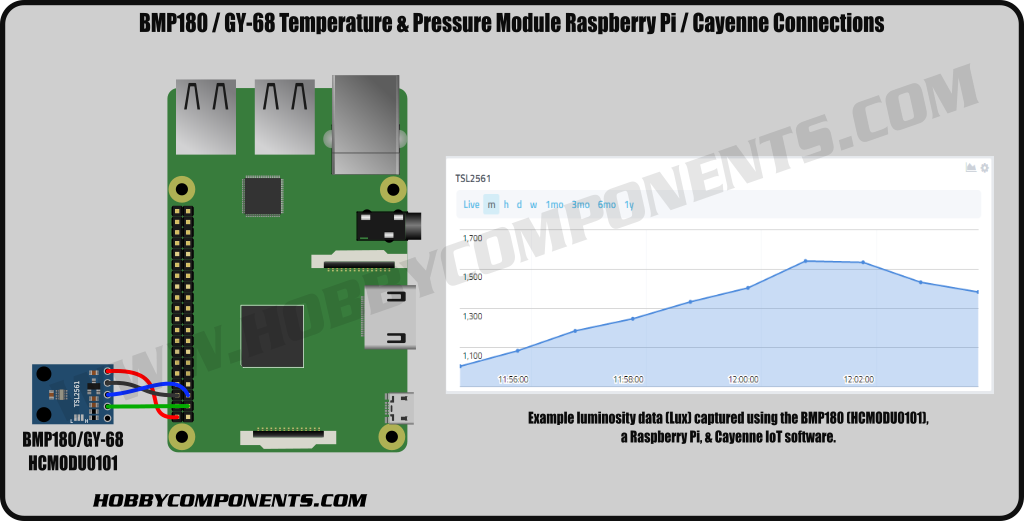IR infrared speed sensing...
An excellent little module for detecting the speed of a motor. Ideal for our 2- and 4-wheeled...
- Currently Out of Stock




The TSL2561 (HCARDU0102) Luminosity sensor module is a light to digital interface module. The sensor contains two photodiodes, one which can detect visible light and infrared (IR), and a second which can detect IR light. Two integrating analog-to-digital converters (ADC) integrate currents from the two photodiodes to produce a digital representation of the the light intensity hitting the sensor.
The TSL2561 (HCARDU0102) Luminosity sensor module is a light to digital interface module. The sensor contains two photodiodes, one which can detect visible light and infrared (IR), and a second which can detect IR light. Two integrating analog-to-digital converters (ADC) integrate currents from the two photodiodes to produce a digital representation of the the light intensity hitting the sensor. Communication to the device is accomplished through a standard, two-wire I2C serial bus. Consequently, the TSL256x device can be easily connected to a microcontroller or embedded controller. No external circuitry is required for signal conditioning. Solderable jumper pads on the module allow 3 possible I2C addresses to be selected for up to 3 sensors or other I2C devices to co-exist on the same bus. An on-board regulator means the module can be powered from a convenient 5V source.


Features:
Approximates Human Eye Response
Programmable Interrupt Function with User-Defined Upper and Lower Threshold Settings
16-Bit Digital Output with SMBus (TSL2560) at 100 kHz or I2C (TSL2561) Fast-Mode at 400 kHz
Programmable Analog Gain and Integration Time Supporting 1,000,000-to-1 Dynamic Range
Automatically Rejects 50/60-Hz Lighting Ripple
Low Active Power (0.75 mW Typical) with Power Down Mode RoHS Compliant
Power supply: 5V
Interface: I2C (0x39 default, 0x29 or 0x49 optional)
Module dimensions: 19mm x 14mm
Raspberry Pi users:
For Raspberry Pi uses we have tested this module with the free Cayenne cloud based IoT software platform. Simply connect the module to your Raspberry Pi as shown below and use the Cayenne software platform to get remote luminosity readings without writing a single line of code. 
You can create a free account simply by clicking our referral link below:
Arduino users:
To make using this module with your Arduino as easy as possible we have written an exclusive library (HCTSL2561). This library can be downloaded from the software section of our support forum here:
viewtopic.php?f=58&t=2021
The library will allow you to obtain readings from both sensors. Additionally, it can use the information from both sensors to perform a calculated Lux measurement as perceived by the human eye.
Example Arduino sketch, exclusive library and datasheet available on our support forum here.
An excellent little module for detecting the speed of a motor. Ideal for our 2- and 4-wheeled...
This module (HCMODU0099) is a breakout board for the Texas Instruments ADS1015 ADC. This...
Transmitter and receiver in one photoelectric sensor. The sensor has an adjustable detection...
The MAX471 module (HCSENS0041) is a complete, bidirectional, highside current-sense amplifier...
This module (HCMODU0098) is a breakout board for the Texas Instruments ADS1115 ADC. This...
The W1209 is an incredibly low cost yet highly functional thermostat controller. With this...
Allows for sensing of solid objects within a fixed range (adjustable with on-board...
On-board ACS712T ELC-05B current sensor; Working voltage: DC 5V; Power LED indicator; Measures...
This is a very simple module that contains a magnetic reed switch which will close its...
A side mounted waterproof float switch (HCSENS0015) which uses a magnet embedded in the float,...
Working voltage: 5V
Circle of Pulses: 20
Product Code: HCMODU0063
Diagrams,...